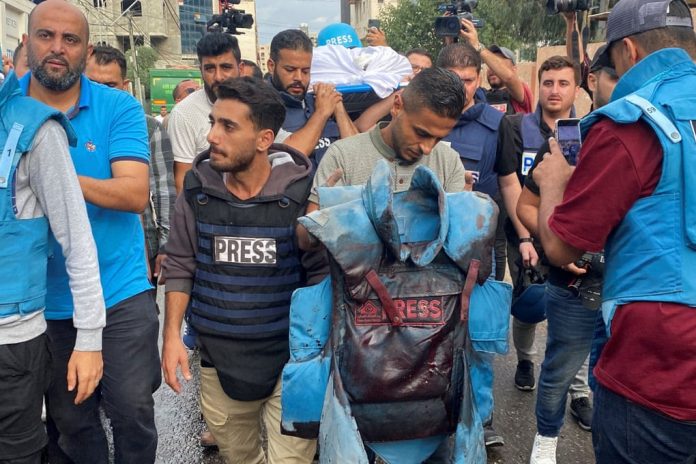28 Jun. 24: A new investigation highlights the unprecedented dangers faced by journalists in Gaza, revealing that one in ten reporters in the region have been killed in the ongoing conflict. Conducted by Arab Reporters for Investigative Journalism (ARIJ) in collaboration with 13 other news organizations, the investigation uncovers the severity of Israeli military actions against journalists.
A reporter in Gaza encapsulated the peril, stating, “We are afraid to wear press vests and helmets. People around us fear they will be harmed by association, making it hard for us to rent an apartment or get transportation, which is already difficult in a war.”
Over four months, ARIJ and its partners documented the deaths, injuries, detentions, and threats faced by Palestinian journalists. The findings indicate that over 100 journalists have been killed in nine months of conflict, surpassing the fatalities seen during World War II. The investigation involved interviews with 120 witnesses in Gaza and the West Bank and consultations with 25 weapons experts.
The Committee to Protect Journalists (CPJ) reported 108 Palestinian journalists killed by June 25, marking this as the deadliest conflict for journalists since the CPJ began tracking data in 1992. The Palestinian Journalists Syndicate (SPJ) recorded an even higher toll, citing 140 journalists killed and 176 injured, representing 10% of Gaza’s current journalistic workforce.
Most journalists – 89 – were killed in airstrikes, while others died while working or at home. Notably, 12 female journalists were among the deceased, with family members often perishing alongside them.
Carlos Martínez de la Serna, CPJ program director, emphasized the indiscriminate nature of the killings, stating, “They’ve been killed while picking out food. They’ve been killed while resting in a tent. They’ve been killed while reporting on the aftermath of a bombing.”
Shuruq As’ad, SPJ spokesperson, stressed the need for global protection for journalists, regardless of where they work. This investigation starkly underscores the extreme risks faced by journalists in conflict zones, particularly in Gaza.




